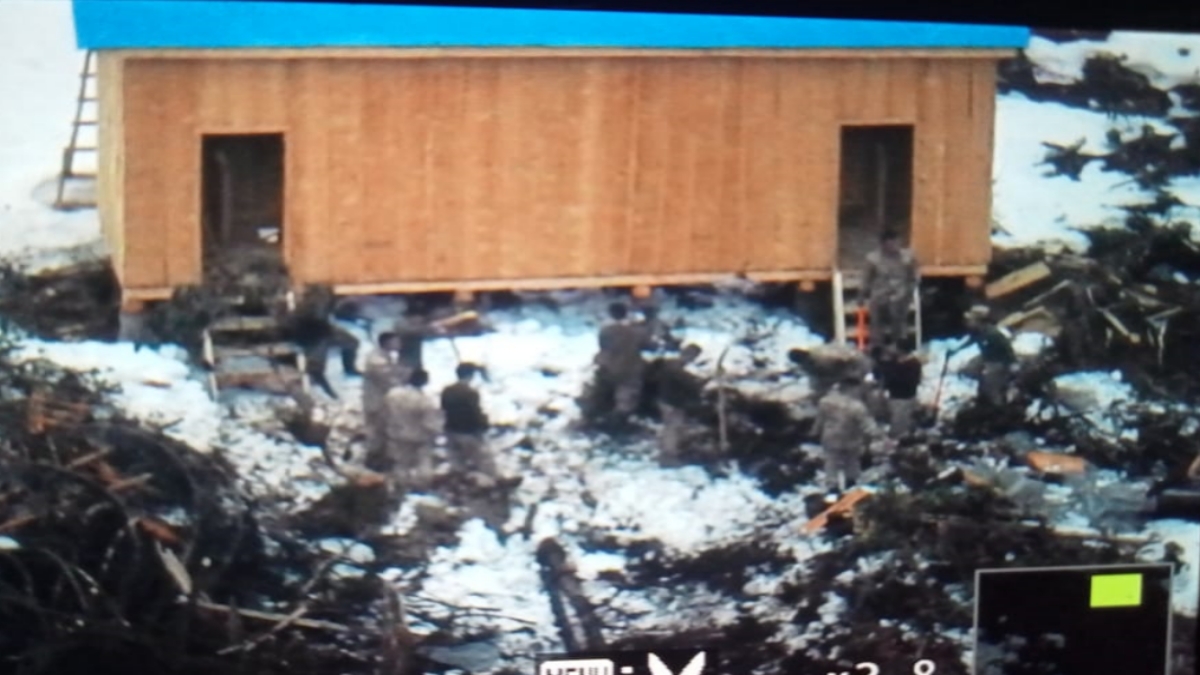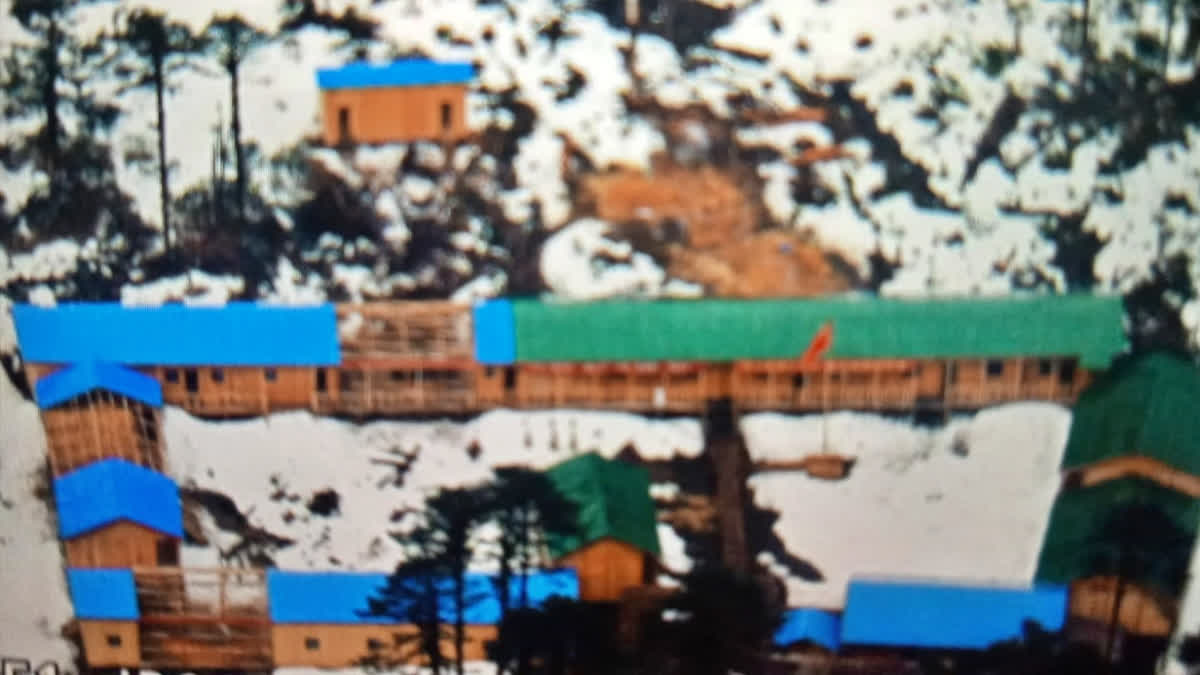New Delhi: Even as India has agreed to continue dialogue and negotiations while maintaining peace and tranquillity along its border with China, the People's Liberation Army (PLA) has built a massive military base near its border with India in Arunachal Pradesh.
The latest development seems to be the PLA’s strategy to monitor the activities on the Indian side. Local villagers who strayed on the other side of the border for hunting shot a few photos of the base of the PLA in September and handed them over to the Indian authorities.
Photos accessed by ETV Bharat show an L-shaped tin-roofed concrete army barrack amidst thick vegetation. A few PLA vehicles are seen parked near the base. A few houses are also seen nearby. Confirming the authenticity of the photos, BJP MP from Arunachal Pradesh Tapir Gao told ETV Bharat that the Chinese Army (PLA) has set up the base to keep a close watch on activities on the Indian side.

“Yes, they have set up such bases which are hardly a few kilometres away from the Indian border,” said Gao. The base which has been constructed is very close to the LAC in the Gelling area of Upper Siang district. At least 1,000 personnel could be housed in the PLA base believed to be built in January this year, just 3 km from the LAC.
Sources said that the aerial distance of the camp from the border will be around 1 km. Gao reiterated that the PLA has started constructing such structures, especially after the Ladakh standoff between the Indian and Chinese Army. The Zila Parishad Member (ZPM) of Gelling, Pema Lapchi, whose residents clicked the pictures, authenticated the development.
“I am aware of the incident where some of our people clicked pictures of the Chinese bases. This place where the PLA set up its base is just opposite to Gelling. The villagers handed over the pictures to the appropriate Indian authorities,” said Lapchi.
He said that on several earlier occasions, Chinese authorities even dared to enter Indian territory with JCB and other heavy road construction machinery and equipment with the intent to construct a road. “They retreated after facing stiff opposition from the locals,” Lapchi said. Talking about the development, army veteran Brigadier BK Khanna said that China keeps making such attempts along the border area.
“Their (Chinese) only intention is to keep a close watch on the movement of Indian forces. They even use high-tech gadgets for this purpose,” said Brigadier Khanna while expressing concern over the development. He also hailed several initiatives taken by the central government to build up infrastructures along the Indian side of the border.
The central government has recently initiated the Vibrant Village Programme (VVP) along the LAC to increase its physical presence near the sensitive border. The government approved VVP, a Centrally Sponsored Scheme in February this year for the comprehensive development of the select villages in 46 blocks in 19 districts abutting the northern border in the States of Arunachal Pradesh, Himachal Pradesh, Sikkim, Uttarakhand and UT of Ladakh.
The programme envisages focused areas of interventions in the select villages for the creation of opportunities for livelihood generation through the promotion of tourism & cultural heritage, skill development & entrepreneurship and the development of cooperative societies including agriculture, horticulture, cultivation of medicinal plants, herbs etc.
The interventions also include providing road connectivity to unconnected villages, housing & village infrastructures, energy including renewable energy, television & telecom connectivity. The government will be investing Rs 4800 crore till 2026, with the first phase covering 11 districts, 28 blocks, and 1451 villages and benefiting a total of around 1.42 lakh people in the selected villages.
The program will be implemented in three phases to prevent migration from remote regions to urban areas and promote reverse migration by providing people with modern facilities and livelihood opportunities. In the first phase of the project, which will span over three financial years from 2023-2024 to 2025-2026, 662 villages will be developed, including Kibithoo in Arunachal Pradesh.
“The vibrant village programme is a very strong initiative to develop infrastructure along the border areas. This was very much required following the fact that people living along the border areas used to leave their home for other developed areas for better livelihood,” said Tapir Gao.
Also read: India carrying out lot of construction activities at China border: BRO DG



